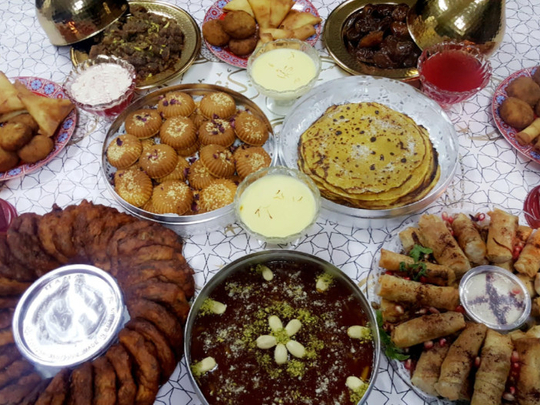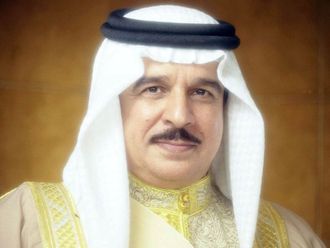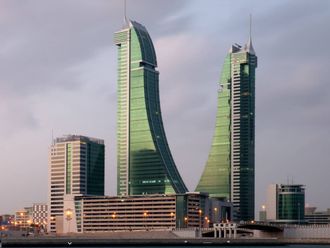
Manama: For most Bahrainis, Ramadan, the month of fasting, is closely associated with the plethora of food that families invariably set on their table when they break the fast or as they while the evening away.
The paradox is part of the local culture that encourages people to reward themselves for a day of fasting with the best culinary delights they can savour.
Ramadan does remain a month of intense spirituality, pious commitments and charitable action.
It is also a month to deepen family ties and strengthen bonds with friends through the nightly vibrant majlises across the country.
Yet, the culinary dimension is also highly significant for families, especially women, who devote time and energy to prepare the best dishes they could.
Such dishes are often seen as rewards for those who successfully spent the day, from dawn till dusk, without food or drink.
And, in the typical mindset, rewards have to be the best possible.
Thareed, the special combination of meat, vegetables, traditional bread and Arabic spices, is the main staple of a typical Bahraini Iftar.
Its carbohydrates, fibres, proteins and starches make it the heathy dish of choice, although its popularity is inexorably diminishing among the younger generation.
Then, there is the equally famous Harees, the dish of boiled, cracked or coarsely-ground wheat, mixed with meat, kebabs and appetizers.
Some families here take a break, and the men opt to go to perform the Maghreb prayers that are exceptionally delayed by 10 minutes to allow people time to break their fast.
For some families, it is a collective prayer at home for both men and women.
Following the prayers, the family is back around the table.
The main dish is often a family choice, but rice is always one spoon away, omnipresent.
Some families opt for Biryani, while others prefer Machboos, Mandi or Ghouzi.
Bahraini Halwa, proud of the strong sweets tradition it has asserted in the Arabian Gulf and well beyond, flavours the evening.
Other sweets include khanfaroosh, the fried saffron and cardamom cakes, and sago, the sweet pudding.
Then, it is time to rest either by watching television or, the sign of the new age, by surfing through mobiles and tablets
Following the Isha (evening) and the Taraweeh (extra prayers), Bahrain is back to its vibrant way of life.
Majlises are the main destination for men keen on seeing relatives and sharing anecdotes with friends.
For less formal gatherings, majlises offer a chance to many young men play games while sharing stories and jokes.
For many women, the traditional Suq in the heart of Manama is a golden opportunity.
Taking advantage of the cooler weather, they prefer to do their shopping ahead of the Eid days in the evening.
They feel that after hours spent preparing food and looking after everyone’s comfort, it is time for them to indulge in less strenuous action.
Ghabga, the usual late dinner, is no longer a family affair and it is mainly used by companies to bring their staff together for an evening of fun and prizes.
Usually held in hotels.
Ghabgas comprise regular foods and often international cuisine.
However, a traditional ghabga should include the inevitable Muhammar rice with the much sought-after Safi (rabbitfish). .
The day ends with the Suhoor when families get again together for their pre-dawn meal.
However, this time, food is much lighter to ensure that stomachs the next days are not upset.
In some neighbourhoods, Musahhirs remain another grand feature of Ramadan. They are men who walk down the streets, beating drums to wake people up and encourage them to eat something and drink water before they start their fast.












